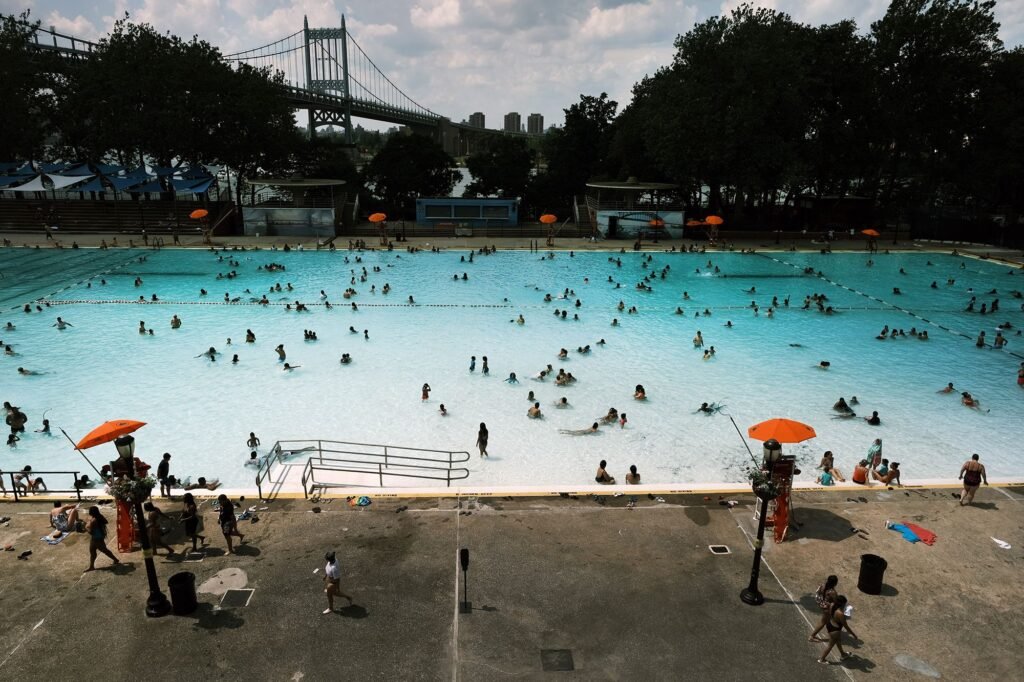Swimming pools have always played an important role in local life. They bring people together, support physical health, and help children learn vital skills that keep them safe in and around water. Yet many communities are facing an increase in pool closures. Some facilities have shut down due to high running costs. Others have reduced opening hours or removed lessons from their timetable. These changes have left many families searching for swimming lessons near me, and many children missing out on a vital part of their development.
This issue affects more than families alone. When pools close, the whole community feels the impact. Access to safe and structured swimming lessons becomes harder. People lose a space where they can move, relax, and connect with others. Over time, this creates a gap in water safety, wellbeing, and social inclusion. It is one of the reasons why many parents now rely on independent swim providers such as those offering swimming lessons in Leeds, who continue to meet demand even when public facilities fall behind.
The importance of swimming in everyday life
Swimming is one of the few sports that people can enjoy at any age. It supports good health without placing strain on the joints. It helps children build strength and coordination. It gives adults a way to stay active in a way that feels gentle and sustainable. People use swimming to recover from injury, manage stress, and build confidence.
Children make some of their most important skills in the water. They learn how to move safely and understand how their body reacts in a different environment. They feel proud when they achieve their first lengths or pass a new stage. Many parents say that childrens swimming lessons give their child a sense of achievement that carries over into school and home life.
Without local pools, many of these opportunities disappear. When a pool closes, the gap is obvious. Families try to travel to other towns. Waiting lists grow longer. Some children stop lessons because the journey becomes too far. This creates a divide between those who can reach a pool and those who cannot.
Why pool closures are happening
Many pool closures have been linked to rising operational costs. Heating large volumes of water requires energy, and energy prices have increased. Some centres have old heating systems that are expensive to run. Others have staffing issues or need repairs that fall outside their budget.
Local authorities often run pools with tight budgets. When costs rise, they have to make decisions about what they can afford. Sometimes this means reducing opening hours. Sometimes it means removing certain classes. In the worst cases, it leads to permanent closure.
Private swim schools face challenges too, but many have adapted by using modern equipment, energy aware heaters, and more efficient pool management systems. These steps help keep facilities open and maintain access to swimming lessons even when public options struggle.
The impact on childrens swimming lessons
Children are the group most affected by pool closures. Learning to swim is a key life skill. It gives children the ability to keep themselves safe in water. It also increases their confidence in physical activity.
When a pool closes, waiting lists grow. Parents try to find new places that offer childrens swimming lessons, but places fill fast. Some families cannot make the extra travel required. Others cannot change their schedules to match new lesson times.
The result is that many children stop lessons during the most important stage of their learning. A break in lessons often leads to a loss of confidence. Skills fade without regular practice. Some children feel nervous when they restart lessons after a long gap.
A lack of early access also reduces the number of strong swimmers later in life. This leads to a long term issue in water safety. When people do not learn to swim as children, they are less likely to learn as adults.
The effect on local health and wellbeing
Pools are more than lesson spaces. They support physical and mental health across the entire community. Regular swimmers enjoy improved cardiovascular fitness and lower stress levels. People recovering from injury often rely on warm water exercise to build strength without pain.
When pools close, many adults lose their main form of exercise. Not everyone enjoys gyms or outdoor sports. Some rely on swimming to stay active because it supports them in a way that other exercises cannot. Without a pool, these people may become less active, which affects their long term health.
Mental health is also affected. Swimming provides a sense of calm. The water helps people feel lighter. The simple act of following a rhythm in the water can help clear the mind. Many swimmers say it is their main way of managing stress. Losing access to that space can leave people without an outlet.
The role of pools in community connection
Swimming pools are social places. Parents talk during lessons. Friends meet for group swims. Teenagers gather for lane sessions. Older adults build friendships through regular morning swims.
Pool closures remove one of the few spaces where people of all ages come together around a shared activity. This affects community spirit. It also reduces opportunities for people to meet new people in a relaxed and safe environment.
Communities with active pools tend to have stronger networks. People recognise faces. Families feel supported. Older adults feel less isolated. When a pool closes, these networks weaken and social wellbeing declines.
The safety risks linked to fewer swimming lessons
Water safety depends on access to good training. If children do not learn the basics of staying safe in water, they have a higher risk of accidents during holidays, school trips, and time outdoors.
Many accidents happen in open water. Lakes, rivers, and beaches attract families during warm weather. Children who have not had access to swimming lessons are less prepared for these environments. They may not understand currents, depth changes, or cold shock.
Confidence in water is a major protective factor. Children feel more aware of their surroundings and know how to react in unexpected situations. When pool closures stop regular lessons, this vital part of safety education disappears.
How pool closures affect schools
Schools depend on local pools to deliver their swimming curriculum. When pools shut down, schools must find alternative facilities, often much further away. This increases travel costs and reduces teaching time. Some schools remove swimming from the curriculum altogether because they cannot reach another pool.
This creates a generation of children who miss out on structured swimming in school. Without school support, families must arrange swimming lessons in Leeds or their local area themselves. Not all families can afford this or fit it into their schedule, which widens the gap between children with access and those without.
The gap filled by local swim schools
Many local swim schools support communities in times of reduced public provision. Independent providers often offer stable lesson schedules, structured progression, and smaller class sizes. These schools help parents who cannot find a place in their nearest public pool.
Some independent swim schools focus on consistent teaching quality, warm water pools, and clear progression frameworks. They also help families who need flexible lesson times or who travel from areas affected by pool closures.
For example, people looking for swimming lessons near me often turn to trusted local providers such as those offering lessons through sites like swimming lessons when public pools are unable to meet the demand.
How reduced access affects young competitive swimmers
Competitive swimmers often start young, and they need consistent pool time. Many have strict training timetables that rely on early morning or late evening sessions. When public pools change their hours or shut down lanes, performance swimmers lose access to essential training time.
This slows progress and makes it harder for clubs to maintain strong teams. Some families try to travel to other towns for training, but this adds cost and strain. Others leave the sport because they cannot manage the change.
Communities with active competitive clubs often have stronger swimming cultures. They inspire young children to take childrens swimming lessons and dream of joining a club. Pool closures weaken this pathway and reduce motivation.
The financial impact on local areas
Pools do more than provide lessons. They contribute to the local economy. Families pay for sessions. Staff gain employment. Swimming clubs generate membership fees. Sporting events and galas bring people into the area.
When a pool closes, many local businesses feel the impact. Cafes near the pool lose regular customers. Coaches lose hours. Local shops see fewer visitors. Over time, the loss of a pool can remove thousands of visits that would have kept money in the local area.
The long term consequences for community development
Communities grow stronger when they have shared spaces. Pools help shape the identity of an area. They give children a safe place to learn. They help adults stay active. They build social ties. They reduce pressure on the health system by supporting physical activity.
When a pool closes, these benefits disappear. The long term effects include lower fitness levels, reduced water safety, weaker community bonds, and fewer opportunities for children to develop key life skills. Over many years, this can change the character of a whole area.
What communities can do to protect access
Communities often work together to protect their pools. Some campaign for funding. Others support independent swim schools. Parents may raise awareness of waiting lists, reduced access, or long travel times.
Support often comes in simple forms. People attend local sessions. They encourage schools to maintain swimming in the curriculum. They enrol their children in structured lessons. They choose local providers who invest in long term access to swimming.
These steps help keep swimming a central part of community life and ensure that children continue to learn vital skills.
How independent providers keep swimming accessible
Independent swim providers offer stability when public pools face challenges. Many focus on small class sizes and patient teaching. They prioritise safety and progression. They create a calm environment where children feel supported as they learn.
Providers that offer swimming lessons in Leeds and across the region help meet the demand left by public closures. They maintain a consistent timetable and offer lessons for all ages, from beginners to confident swimmers.
These schools give families reliable access to the water, which helps keep communities active, safe, and connected.
Pool closures are a community issue
Pool closures affect everyone. They limit access to swimming lessons, reduce physical activity, and weaken community bonds. They place children at risk by limiting their ability to develop water safety skills. They also impact adults who rely on swimming as their main form of exercise.
Parents often look for trusted and well run providers to fill this gap. Many find stable and supportive environments through local swim schools such as those offering structured lessons on pages like swimming lessons near me. These providers give families a reliable way to maintain progress even when public facilities struggle.
Moving forward
Communities benefit when people have access to warm, safe, and well managed pools. They benefit when children can join childrens swimming lessons without long waits. They benefit when adults can swim at times that suit their life.
If we want to protect these benefits, we need to value the role of swimming in daily life. We need to support independent providers who keep access open and help families stay active. We also need to recognise the impact of closures on our health and wellbeing.
Swimming is one of the simplest and most effective ways to build confidence, fitness, and safety skills. By supporting providers and encouraging access to lessons, communities can stay strong, connected, and safe in and around water. If you would like to explore lesson options in the local area, you can find clear guidance and structured programs on pages such as swimming lessons, which continue to help families maintain access to high quality training.

